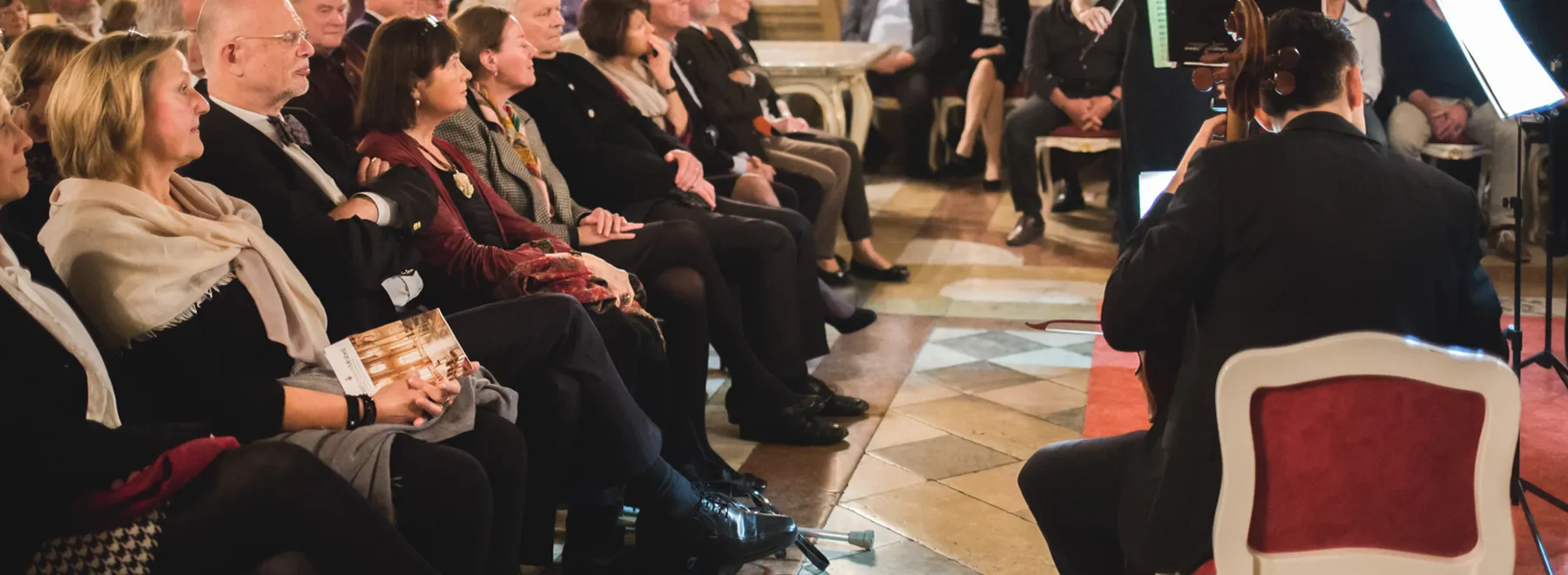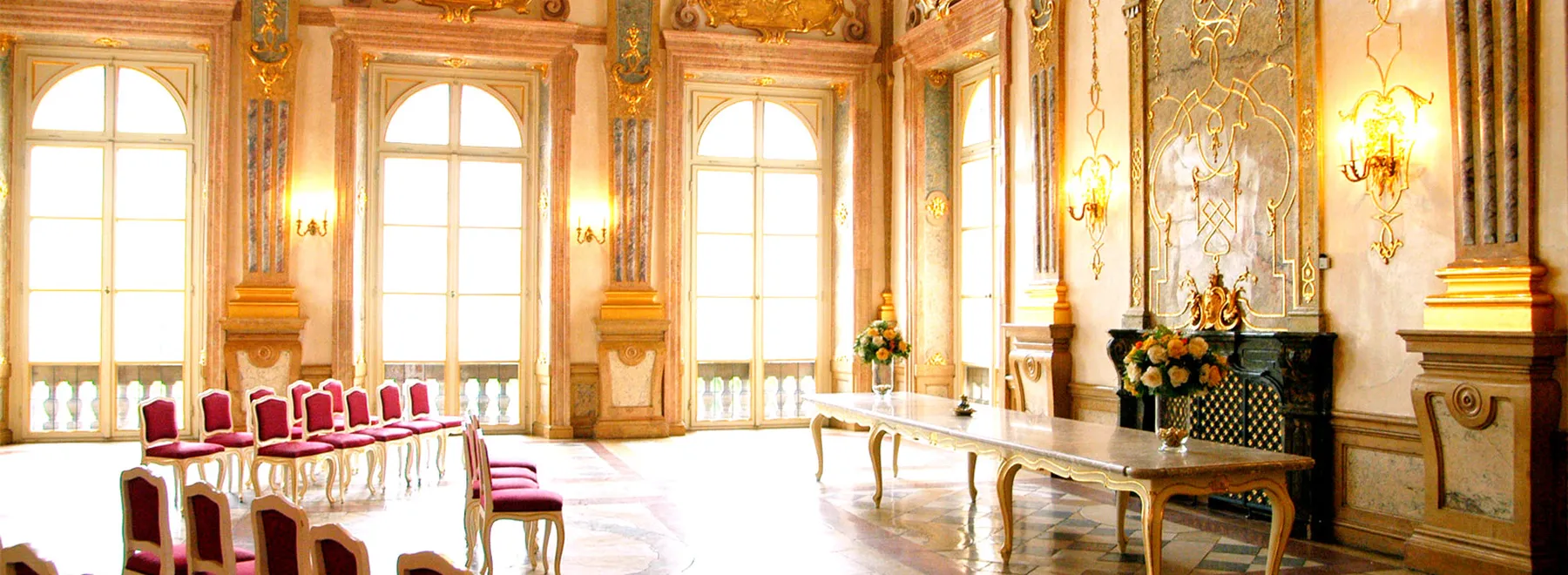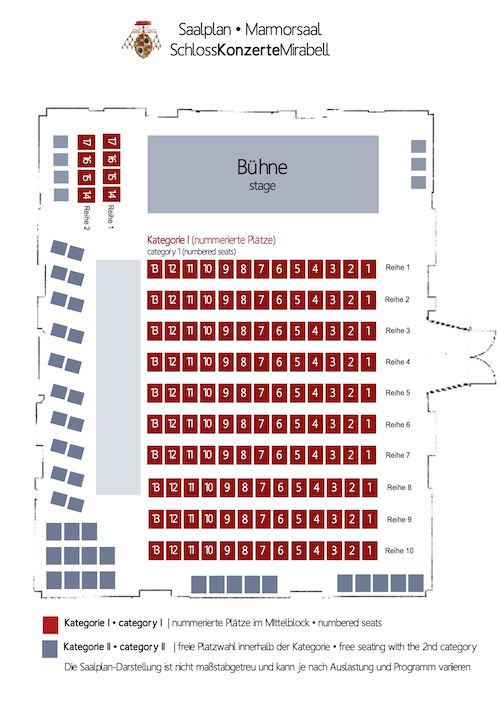Palace Concert in Salzburg
Location:Marble Hall at Mirabell Palace in Salzburg
Concert
Mozart & Salieri – Masterpieces of Classic
MOZART: Salzburg Divertimento D Major KV 136
MOZART: Concert for Flute and Strings D-Major KV 285d
: INTERMISSION :
SALIERI: Concertino da camera for Flute and Strings G-Major
MOZART: Serenade G major KV 525 “A Litte Night Music“
(Programme subject to changes)
MOZART: Concert for Flute and Strings D-Major KV 285d
: INTERMISSION :
SALIERI: Concertino da camera for Flute and Strings G-Major
MOZART: Serenade G major KV 525 “A Litte Night Music“
(Programme subject to changes)
Ensemble 1756 &
Irmgard Messin, Flute
An evening full of beautiful sounds and elegance: Ensemble 1756 presents masterpieces by Wolfgang Amadeus Mozart and Antonio Salieri. Irmgard Messin enchants as soloist in the virtuoso flute concerto KV 285d and in the cheerful Concertino da camera. In addition to Mozart's lively Salzburg Divertimento, the immortal serenade ‘Eine kleine Nachtmusik’ is performed as the festive highlight. A programme that delights with charm, lightness and brilliance!

Ticket Categories
Category I
Numbered seats, central seating.
Seats can be chosen with the next step.
Seats can be chosen with the next step.
Adult46.00 €
Child/Student (Admission from the age of 6, Child 6-14 years - Student up to 26 yearsEinlass ab 6 Jahre, Kind 6-14Jahre - Schüler/Student bis 26 Jahre)32.00 €
Adult & Dinner (6pm Dinner at Grand Sheraton & 8pm Concert at Mirabel Palace)89.00 €
Child/Student & Dinner (6pm Dinner at Grand Sheraton & 8pm Concert at Mirabel Palace)76.00 €
Category II
Unnumbered seats behind and on the side of Cat. I, open seating.
Adult42.00 €
Child/Student (Admission from the age of 6, Child 6-14 years - Student up to 26 years)28.00 €
Wheelchair
Wheelchair place28.00 €
Wheelchair place & Dinner67.00 €
Location
The baroque Marble Hall of Mirabell Palace is known as one of the most beautiful and historically important concert halls in Salzburg and the world. In former times the Mozart family played music there for the archbishops.


